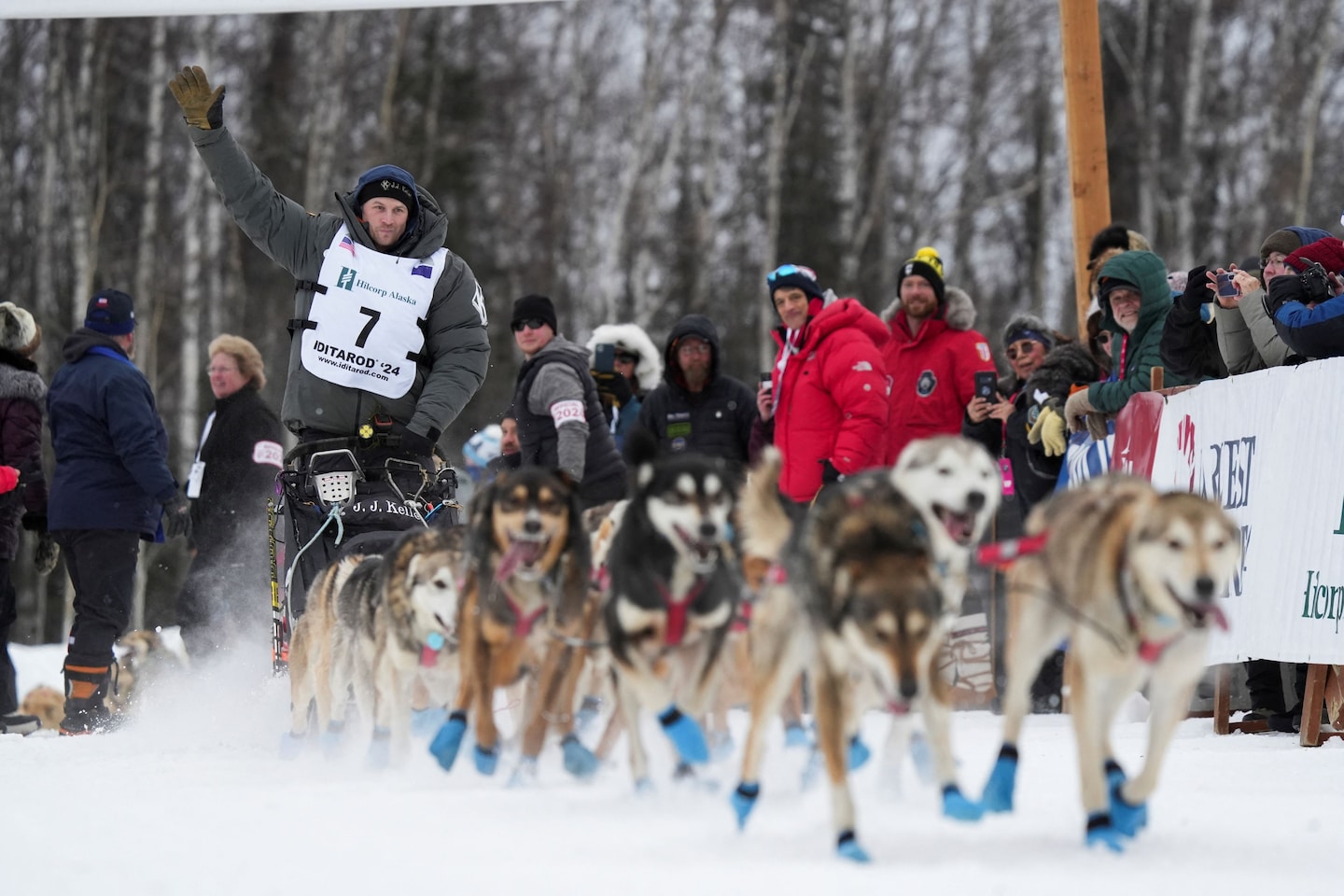“I gutted it as best I could, but it was ugly,” Seavey, 37, told an Iditarod video team (via the Anchorage Daily News) when he reached Finger Lake.
A statement from the Iditarod said the incident occurred 14 miles outside Skwentna when the moose “became entangled with the dogs and the musher on the trail.” Per the statement, Seavey “was forced to dispatch a moose in self defense.”
According to a Facebook post by the team of fellow musher Wally Robinson, Seavey “did the only thing he could do and shot the moose.” Coming along the trail after Seavey, Robinson and his dogs ran over the moose’s carcass, per the post.
Seavey left Skwentna in second place, behind race leader Jessie Holmes, but he dropped to 13th after taking more than eight hours to reach Finger Lake. Holmes finished the stage in less than five hours, while Paige Drobny only took a few minutes longer to reach Finger Lake, albeit not without hurdling a notable obstacle.
“It’s dead in the middle of the trail,” Drobny said of the moose to Iditarod staffers at Finger Lake. “My team went up and over it.”
Holmes said at the checkpoint that he “had to punch a moose in the nose out there,” and Robinson’s team reported that it saw a moose kicking at Holmes’s dogs.
The rules of the race state: “In the event that an edible big game animal, i.e., moose, caribou, buffalo, is killed in defense of life or property, the musher must gut the animal and report the incident to a race official at the next checkpoint. Following teams must help gut the animal when possible. No teams may pass until the animal has been gutted and the musher killing the animal has proceeded. Any other animal killed in defense of life or property must be reported to a race official, but need not be gutted.”
Race organizers said that when Seavey arrived at Finger Lake at 8 a.m., Alaska State Troopers were “immediately notified” of the incident.
“With help from snowmobile-aided support in the area, we are making sure that every attempt is made to utilize and salvage the moose meat,” organizers said.
One of Seavey’s dogs reportedly was flown from Finger Lake to Anchorage to receive veterinary care. Seavey, a third-generation musher whose race biography notes he was born in Virginia before his family moved back to Alaska when he was 5, rallied to arrive at the next checkpoint in fourth place.
The Iditarod, in its 52nd year, started in earnest Sunday at the Willow checkpoint, located approximately 37 miles north of Anchorage. It is set to wind in a northwesterly direction over an approximately 1,000-mile course, taking several more days until mushers reach the finish line in Nome.
Seavey last won the race in 2021, when he set an event record by completing it in 7 days 14 hours 8 minutes 57 seconds. He also finished first in 2012, when he became the Iditarod’s youngest winner, and in 2014, 2015 and 2016.
Holmes, 42, is an Alabama native who came to Alaska in 2004. Now a veteran of the Iditarod looking for his first win, Holmes is also a featured character in “Life Below Zero,” a National Geographic docuseries about people who sustain themselves in remote areas of the state.
Encounters with animals are not uncommon during the Iditarod, but incidents in which moose end up dead are reportedly infrequent. A spokesperson for the race did not immediately respond Monday to a request for comment.
“That was the experience of a lifetime. I can’t say I’ve ever run a 16-dog team over a moose, so that was kind of interesting,” said musher Bailey Vitello, who is in his second Iditarod. “Don’t know if I want to do it again.”


 Best Underground Water Leak Detection Equipment 2024
Best Underground Water Leak Detection Equipment 2024  Best Backyard Ideas: Turn Your Outdoor Area Into a Creative and Calm Haven
Best Backyard Ideas: Turn Your Outdoor Area Into a Creative and Calm Haven  Babar, Rizwan are good players but not whole team, says Mohammad Hafeez
Babar, Rizwan are good players but not whole team, says Mohammad Hafeez  Pak vs NZ: Green Shirts aim to bounce back against Kiwis today
Pak vs NZ: Green Shirts aim to bounce back against Kiwis today